COMPARISON
InfluxDB Open Source 1.x vs InfluxDB 3
Use this guide to understand the differences between InfluxDB Open Source 1.x and InfluxDB 3 and discover which database is the best fit for your organization.
InfluxDB is purpose-built for handling time series data at a massive scale to build real-time intelligent systems.
InfluxDB is purpose-built for time series data, giving developers the tools to turn high-volume, high-velocity, high-resolution time series data into actionable intelligence without sacrificing performance. Manage the continuous cycle of time series data: real-time collection, ingestion, analysis, compression, and eviction in a single database. InfluxDB is ideal for use cases such as real-time monitoring of IT networks and infrastructure, monitoring control, predictive analytics, and powering intelligent and autonomous systems.
With the release of InfluxDB 3, one of the big questions is: how does it compare to previous versions of InfluxDB?
This side-by-side comparison of InfluxDB Open Source 1.x vs the 3 engine highlights the key differences between these databases so you can choose the solution that best meets your needs.
Data Ingest Performance
Results represent 21.5 hours of metrics reported from varying load of Telegraf instances.
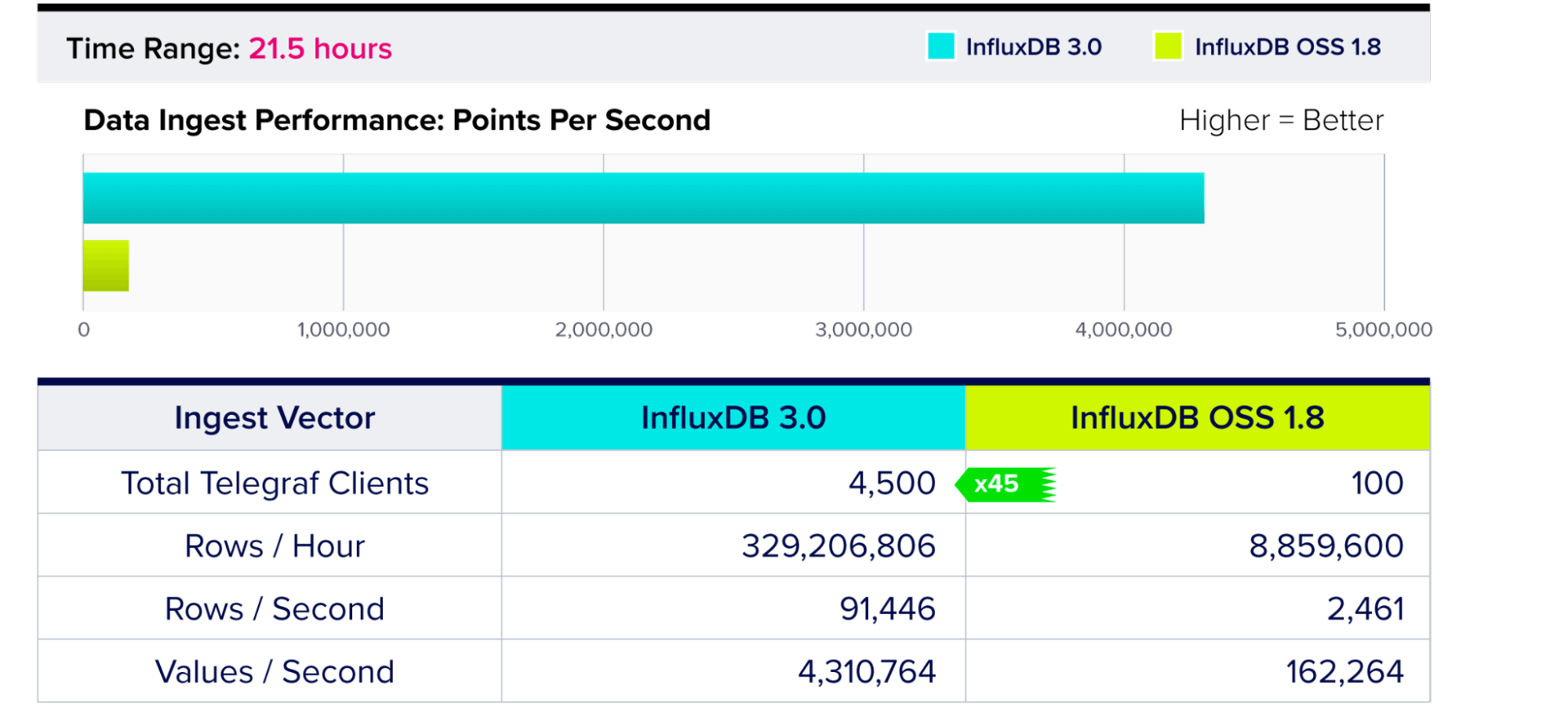
Storage Performance
The cost saving is maximized because InfluxDB 3 uses object storage which is cheaper than the SSD (Solid State Devices) based storage used by InfluxDB OSS.

Get the full report
Query Performance Observations
Query Performance – Aggregate Query Types
Queries that output aggregate values (e.g. count, sum, min, max etc.) derived from selected rows.
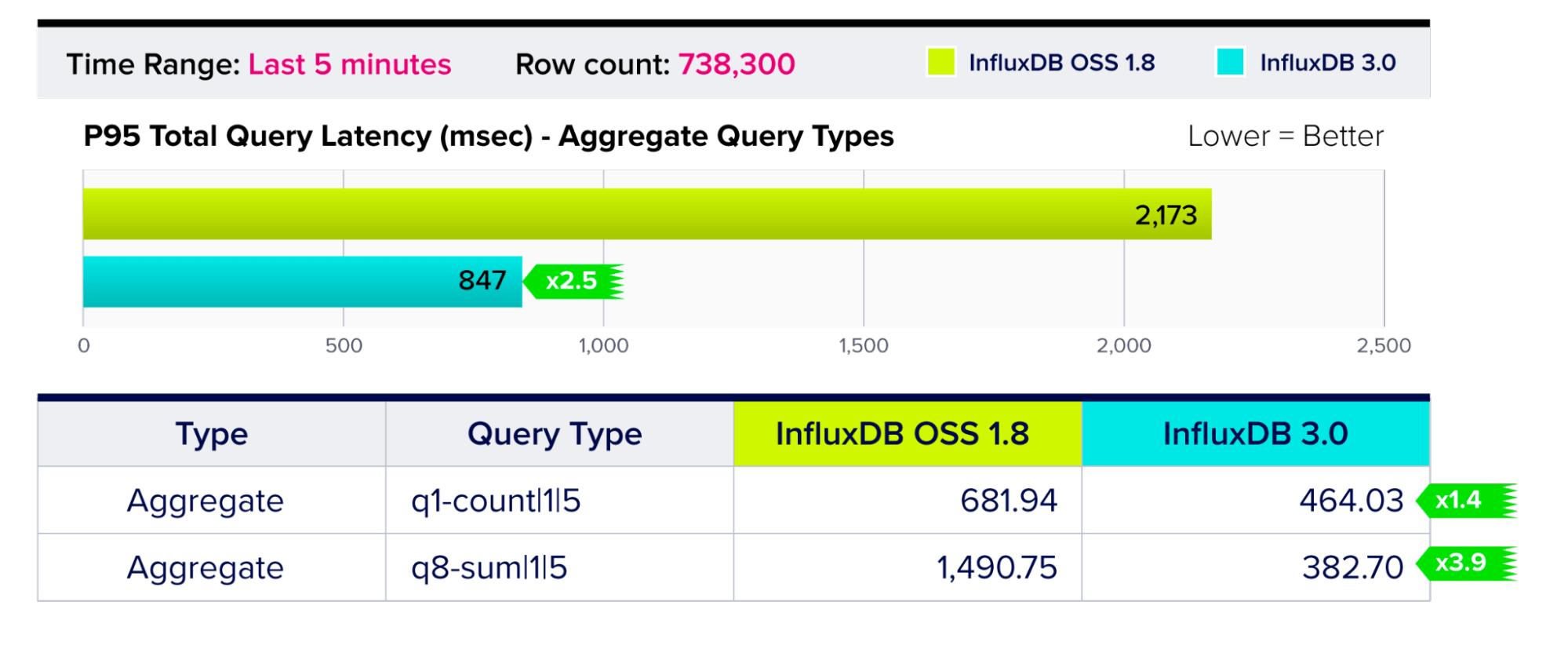
Query Performance – Group by / Order by Query Types
Queries that output aggregate values (e.g. count, sum, min, max etc.) derived from selected rows.
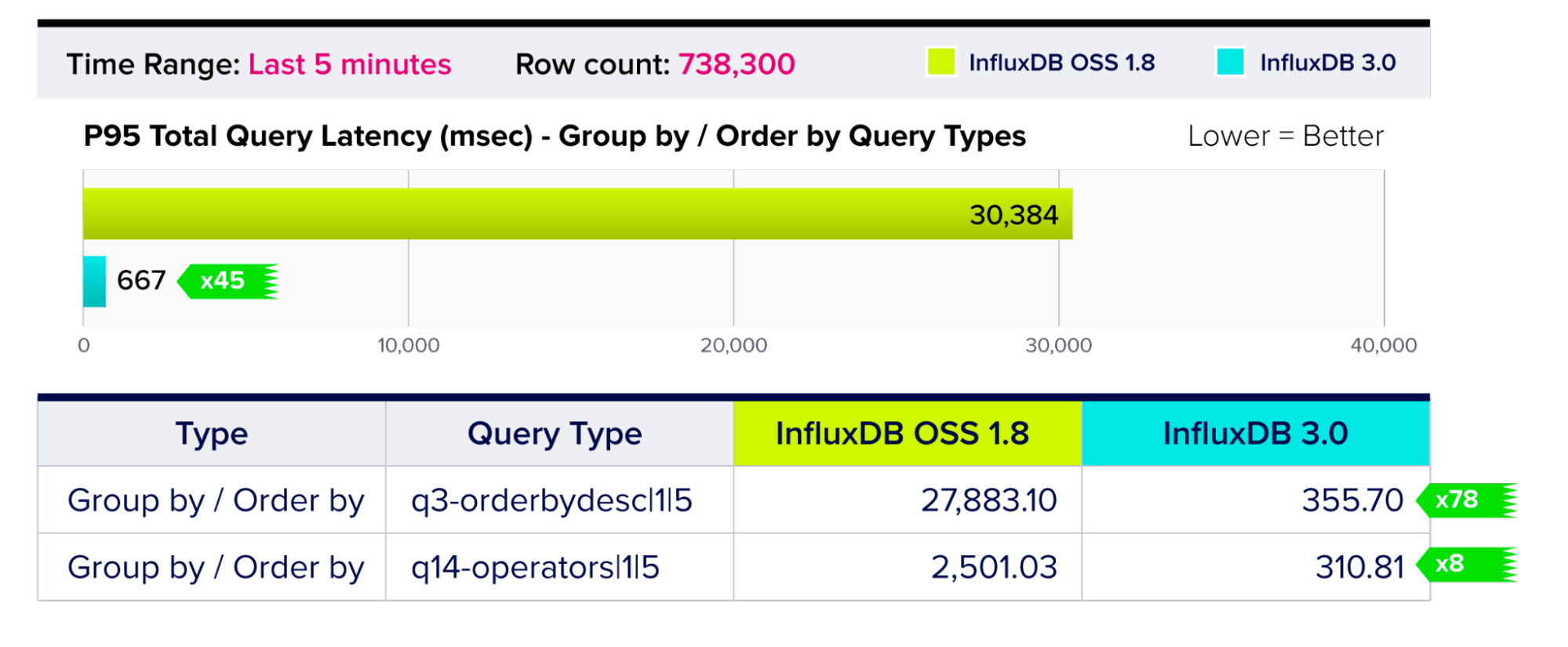
Query Performance – Limit / Top / Bottom Query Types
Queries return only the rows specified by LIMIT or TOP or BOTTOM condition.
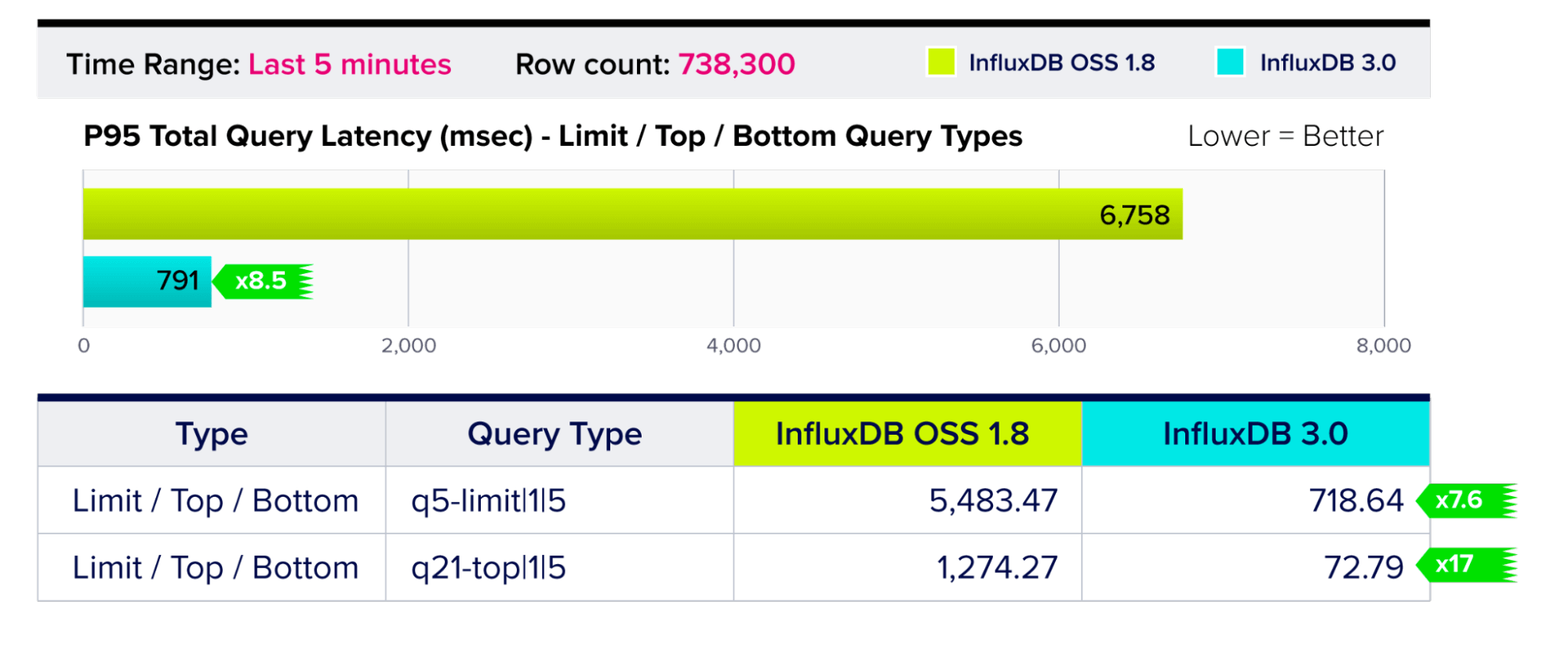
Query Performance – Statistic / Math Query Types
Queries that perform math (e.g. mode, median, etc.) or statistical (e.g. spread, stddev, percentile, etc.) functions on the rows selected.
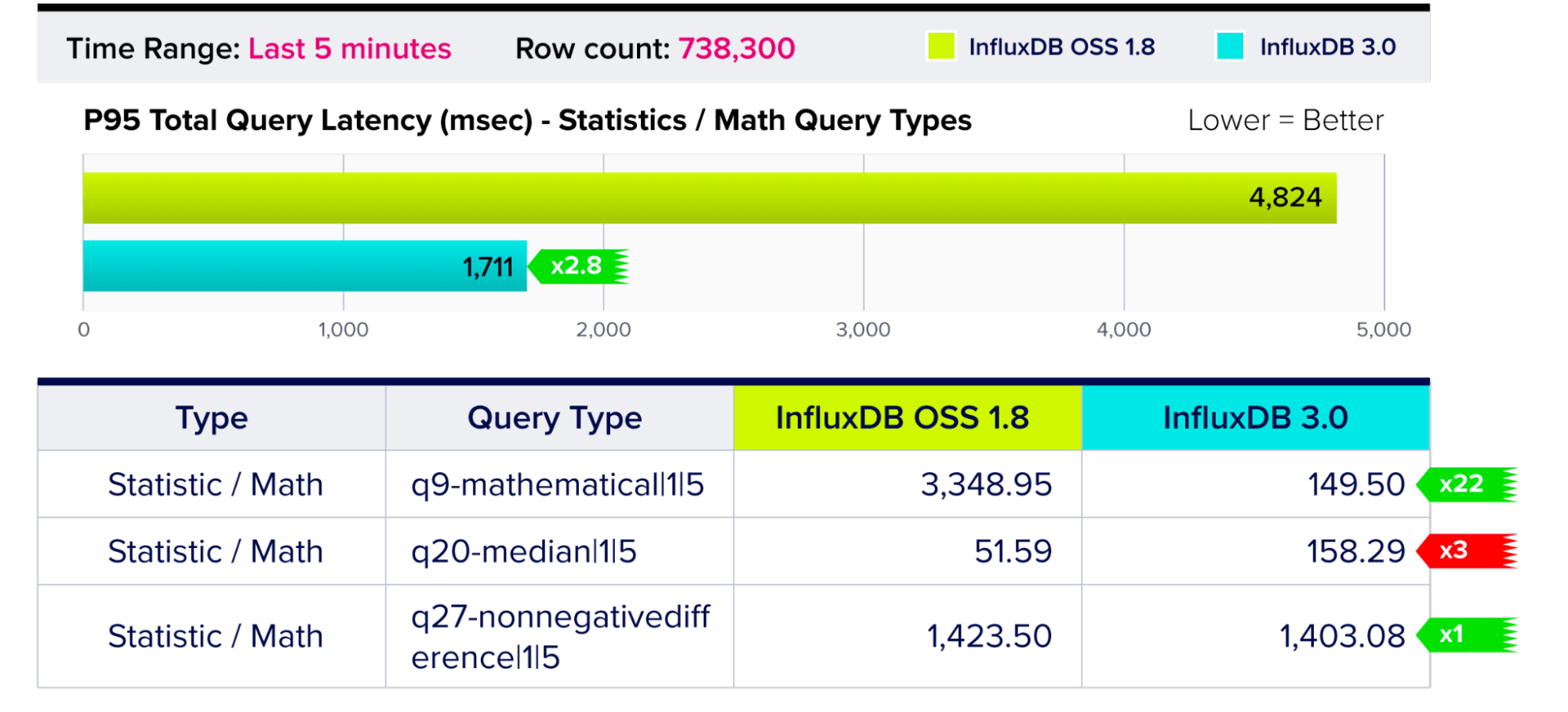
Trusted by more than half a million users


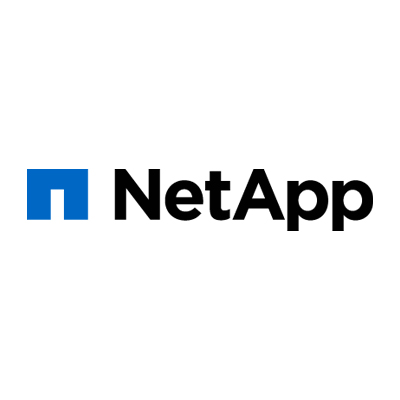
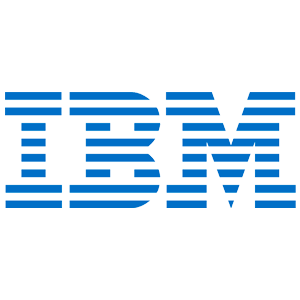



We decided, from a monitoring perspective, that we are going with a best of breed setup. So, we put the best tools in place, like InfluxDB for metrics monitoring.
Daniel Putz,
DevOps Enablement, Volvo
InfluxDB is a high-speed read and write database. The data is being written in real time, you can read in real time, and when you’re reading it, you can apply your machine learning model. So, in real time, you can forecast, and you can detect anomalies.
Rajeev Tomer,
Sr. Manager of Data Engineering,
Capital One
I cannot tell you how much we reach out to InfluxData Technical Support, which has been really, really, really helpful to help us out in time of need.
Dennis Brazil,
SRE Monitoring, PayPal
Download your free copy of the full benchmark report here.
Want to take the 3 engine for a spin?
Sign up for a free account
